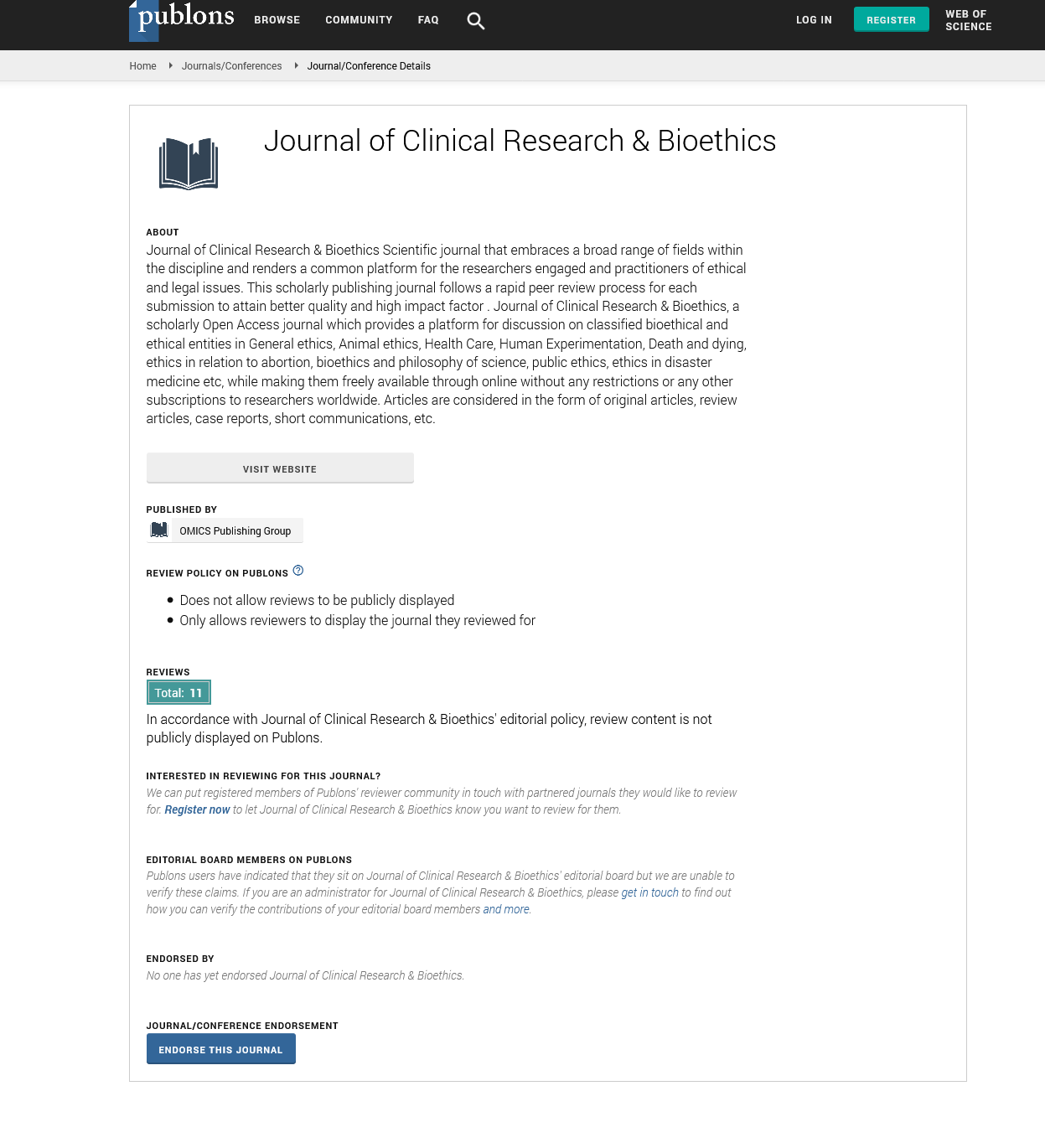Indexed In
- Open J Gate
- Genamics JournalSeek
- JournalTOCs
- RefSeek
- Hamdard University
- EBSCO A-Z
- OCLC- WorldCat
- Publons
- Geneva Foundation for Medical Education and Research
- Google Scholar
Useful Links
Share This Page
Journal Flyer

Open Access Journals
- Agri and Aquaculture
- Biochemistry
- Bioinformatics & Systems Biology
- Business & Management
- Chemistry
- Clinical Sciences
- Engineering
- Food & Nutrition
- General Science
- Genetics & Molecular Biology
- Immunology & Microbiology
- Medical Sciences
- Neuroscience & Psychology
- Nursing & Health Care
- Pharmaceutical Sciences
Editorial - (2021) Volume 12, Issue 6
Hypothesis on Social Behaviour Concept
John Napierh*Received: 01-Oct-2021 Published: 21-Oct-2021
Description
Behaviorism, otherwise called social brain science, is a hypothesis of learning dependent on the possibility that all practices are procured through molding. Molding happens through communication with the climate. Behaviorists accept that our reactions to ecological improvements shape our activities.
As per this way of thinking, conduct can be concentrated in a deliberate and noticeable way paying little heed to interior mental states. As per this viewpoint, just noticeable conduct should be thought of-perceptions, feelings, and temperaments are dreadfully abstract. Severe behaviorists accepted that any individual can conceivably be prepared to play out any assignment, paying little mind to hereditary foundation, character attributes, and inward contemplations (inside the constraints of their actual abilities). It just requires the correct molding.
From around 1920 through the mid-1950s, behaviorism developed to turn into the prevailing way of thinking in brain research. Some recommend that the prominence of conduct brain research outgrew the craving to set up brain science as a target and quantifiable science. As of now, specialists were keen on making speculations that could be plainly portrayed and exactly estimated yet additionally used to make commitments that may impact the texture of regular living souls.
Key Concepts
There are several principles that distinguish behavioural psychology from other psychological approaches.
Two types of conditioning
According to behavioral psychology, there are two major types of conditioning, classical conditioning and operant conditioning.
Classical conditioning: Traditional molding is a method as often as possible utilized in conduct preparing in which an unbiased improvement is matched with a normally happening boost. In the long run, the unbiased upgrade comes to summon a similar reaction as the normally happening boost, even without the normally happening improvement introducing itself.
Operant conditioning: Operant molding (now and again alluded to as instrumental molding) is a strategy for discovering that happens through fortifications and disciplines. Through operant molding, an affiliation is made between a conduct and a ramification for that conduct.
At the point when an alluring outcome follows an activity, the conduct turns out to be bound to happen again later on. Reactions followed by unfavourable results, then again, become less inclined to happen again later on.
Conditioning can be influenced
During the initial segment of the traditional molding measure, known as obtaining, a reaction is set up and reinforced. Factors, for example, the unmistakable quality of the boosts and the circumstance of introduction can assume a significant function in how rapidly an affiliation is framed.
At the point when an affiliation vanishes, this is known as elimination, making the conduct debilitate continuously or disappear. Factors, for example, the strength of the first reaction can assume a function in how rapidly elimination happens. The more extended a reaction has been adapted, for instance, the more it might take for it to get wiped out.
Learning through association: The old style molding measure works by building up a relationship between an ecological boost and a normally happening upgrade. In physiologist Ivaneishi Pavlov's exemplary analyses, canines related the introduction of food (something that normally and consequently triggers a salivation reaction) with the sound of a ringer, from the outset, and afterward seeing a lab colleague's white coat. At last, the sterile jacket alone evoked a salivation reaction from the canines.
Citation: Napierh J (2021) Hypothesis on Social Behaviour Concept. J Clinic Res Bioeth. 12:e380.
Copyright: © 2021 Napierh J. This is an open-access article distributed under the terms of the Creative Commons Attribution License, which permits unrestricted use, distribution, and reproduction in any medium, provided the original author and source are credited.

